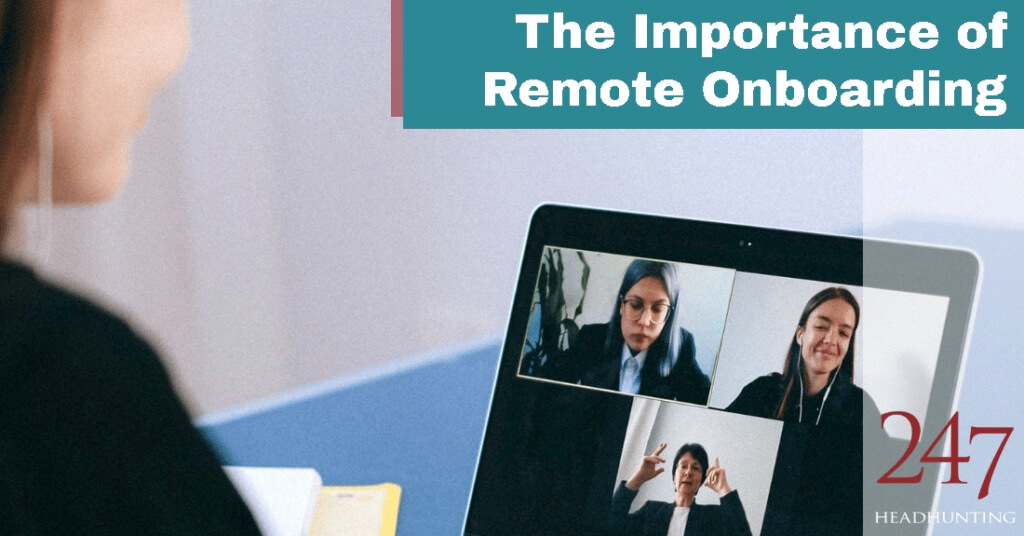If your company is currently in the fortunate position to make new hires right now, there’s a good chance they’ll be doing their job remotely from day one. But this doesn’t mean you can let your onboarding process slip. In fact, an involved onboarding process may be more crucial now than it’s ever been, if you want to keep potential turnover low and employee morale high. Turnover costs can be as much as 3x an employee’s salary, a massive figure in itself and even more of an impairment in our current economy. Those first weeks and months—as well as the period before candidates start a new job— are critical to whether they’ll stick around for the long run, even in the middle of an unprecedented crisis like COVID-19.
Facilitating a new hire’s transition to a team which may not meet in-person for quite some time can be riddled with potential challenges and pitfalls. Recruiters and staffing companies need to be attentive to ensure this transition goes smoothly, cultivating a set of onboarding practices that go beyond the administrative aspects and that can be deployed without necessarily meeting face-to-face.
Getting Buy-In
Getting new hires excited about working with an employer is critical to the onboarding process, particularly if they’ll be spending their day working out of the home office. 58% of organizations say that their onboarding process is focused primarily on paperwork, and only 12% feel they do a great job onboarding. While a staffing agency only has so much influence over end-client’s processes, we can educate the client on how to make their onboarding process as attractive as possible.
If you are a recruiter working with a new candidate, you can fill them in on the company’s culture. It’s a good idea to schedule a few virtual meetings to simply to explain the company’s values and what they can expect working there. Give the candidate space to ask questions, and be sure to familiarize yourself with the end-client as much as possible so that you can answer effectively.
This is an area where you can really set your recruiting process apart from the competition. With so few organizations doing a good job onboarding, a little extra effort can make a big impact. If you’ve placed other employees that are currently working at that company, consider reaching out to them to get their input to pass along to new candidates during your virtual meetings. A fellow employee’s perspective is incredibly valuable to new hires, as they’ll be able to speak to workplace dynamics that you as a recruiter might not know about.
More Buy In = More Productivity
New employees ramp up their productivity faster when a great onboarding process is in place. This is crucial since most companies today are trying to do more with less in the time of COVID. For context, 54% of companies attribute high productivity in new hires pto the way they onboard. These figures are stark considering so few organizations believe they do a great job bringing on new hires.
There is a slight risk of a dip in productivity when everyone is working remotely, so recruiters need to communicate the value of a new candidates position prior to their start date if they want them to thrive. Though we’re seeing this trend subside in our current crisis, a lot of workers today tend to job hop more frequently than in the past. This can be attributed to a myriad of reasons; benefits and salary certainly play a large role, but so do more intangible concerns like job dissatisfaction and a sense that their value and contributions aren’t recognized. Staffing firms should minimize these drawbacks for candidates as much as possible, and encourage end-clients to hold virtual happy hours or informal video calls, especially for new staff members, to ensure everyone feels connected and to help keep up productive output. Making sure all team members are operating at their peak is critical during these times of slow economic growth and limited staff.
Employee Retention
Onboarding, of course, has implications for long-term employee retention too. Research from Glassdoor shows that strong, thoughtful onboarding procedures can boost retention by a whopping 80%! While it’s true these numbers reflect a time prior to COVID-19, employees that like their jobs and want to stay on, regardless of the current context, attribute their satisfaction in part to a meaningful onboarding experience.
Make sure to handle all paperwork and administrative aspects for your candidate prior to their first day. You should aim to make this part of the process as simple and stress-free as possible. And pay close attention to their first week on the job. In a remote environment recruiters may have to be more involved with this transition. You may have to quell those new job anxieties too, and generally be there for them as they embark on this journey. For recruiters, it’s crucial to really take all of these dynamics into account to achieve long-term retention: If you do your due diligence early, great onboarding can help you expand your talent networks and form lasting relationships. Check-in early and often, making sure new hires are enjoying the position and adapting to the new company culture.
Today, staffing companies cannot afford to overlook or neglect their onboarding procedures. And at a time where large numbers of employees are working remotely, it’s even more important. Turnover costs can really add up during a good business climate, and in that regard 2020 leaves a lot to be desired. Employees and new hires are missing out on all the interpersonal office dynamics that are so critical in making sure a team operates effectively. Recruiters and staffing firms need to step up and help bridge the gap and help candidates transition seamlessly to their new organization, helping them to become the best versions of themselves when they start that new position.



